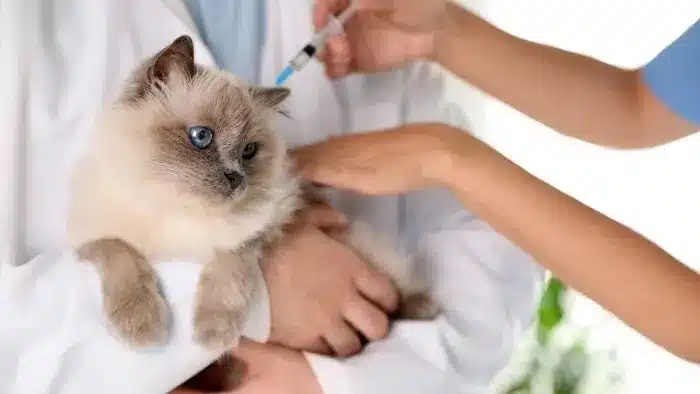How Long After Rabies Vaccine Do Cats Have Antibodies?

“I just gave my cat a rabies shot. When is it safe to go outside?”
“Does the vaccine work right away?”
Rabies vaccination is the main way to protect cats and families. However, many owners are unaware of how quickly antibodies form, how long they persist, and what factors influence their development. Rabies is a deadly disease, and once a cat is infected, there is no cure. Understanding how rabies antibodies function is crucial.
1. Antibody timeline: from first shot to booster
Antibodies do not appear right after vaccination. The immune system needs time.
First shot (usually at 3 months of age): Antibodies start to appear after 7–14 days, but the level is too low to provide full protection.
Second shot (21–28 days later): antibodies rise quickly, reach a protective level within 5–7 days, and peak at about 1 month. Protection usually lasts 1 year.
Booster shots (for adults, administered once a year or once every 3 years): antibodies return to a safe level within 3–7 days due to immune memory.
2. Factors that affect antibodies
Not all cats develop sufficient antibodies after vaccination, and several factors can influence this outcome. Kittens, senior cats, or those with immune system issues or a history of long-term steroid use may respond poorly to this treatment. Vaccine issues, such as expiry, improper storage, or incorrect injection, also lower effectiveness. Timing matters too—if the cat is sick, stressed, or has a fever or diarrhoea, the immune system may not work well. In young kittens, maternal antibodies can block the vaccine, which is why two basic shots are needed.
3. Care after vaccination
After vaccination, owners should protect their cats from potential risks. Mild swelling, tiredness, or a low appetite for 1–2 days is normal, but rare severe reactions, such as facial swelling or breathing trouble, require urgent veterinary care. Until antibodies build—about 14 days after the first shot—keep cats away from strays. An antibody test a month after basic shots is useful. Keep vaccine records and never skip boosters, even for indoor cats, since rabies can spread through bats or rodents. To reduce stress, avoid bathing, deworming, or surgery for a week.
4. Antibody testing: the gold standard
A blood test can measure antibody levels and indicate whether the cat has developed protection.
When to test: after kitten basic shots, after booster in old or weak cats, or after a risk exposure (bite, scratch).
Method: ELISA test. Result shown as “titer.” The safe level is 0.5 IU/ml or above.
Cost: approximately $15–$50, with a result in 1–2 days. If the level is low, revaccination is needed.
